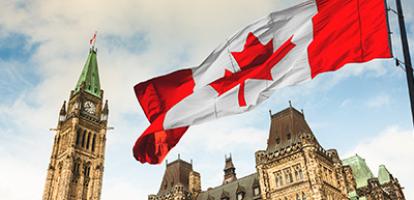Published in the National Post on June 24, 2015
By William Robson
William Robson is president and CEO of the C. D. Howe Institute.
Inflation? Meh. To most Canadians, especially young Canadians, it’s an abstract threat, or no threat at all. And that, for those who remember the crazy price increases of the 1970s and ’80s, is an amazing change for the better.
The end of 2015 will mark two full decades since the Bank of Canada adopted a two per cent target for annual increases in the consumer price index (CPI). And it’s been mostly hitting the target. Over the 234 months from the end of 1995 to this May, the CPI was within one percentage point of the target in 183 of them. The cumulative annualized CPI increase over that period was 1.9 per cent.
Close enough for government work? It seems so. Forecasters and investors now firmly expect two per cent inflation. For Canadians generally, the double-digit inflation of the mid-’70s and early-’80s is something parents might tell their children about — on a dull day.
Two per cent inflation is not ideal. We measure prices, wages and lots else with money. Imagine if other measures — feet, kilograms, degrees of temperature, or litres of fuel in our gas tanks — changed, even by small, predictable amounts. We’d struggle; we’d make mistakes. And even two per cent inflation has large distributional effects over time: by the end of a 35-year retirement, the purchasing power of a former government employee’s indexed pension will double compared to another person’s ordinary annuity.
Most — but not all. Some economists, notably in the United States and at the International Monetary Fund, have recently argued that inflation is too low. When Bank of Canada officials picked up that theme recently, their musings made headlines and advocates of more inflationary monetary policy chimed in.
The crux of the argument is that interest rates cannot go below zero. So if inflation, and nominal yields and spending growth, are very low, inability to make borrowing costs even lower — to make real (inflation-adjusted) interest rates negative, for example — may deprive central banks of their power to stimulate. And the economy goes into a macroeconomic black hole.
That seems plausible. Cash has a stable nominal value, so why would anyone pay someone else to hold their money rather than putting it in a vault, or a mattress? Look deeper, though, and the argument falls apart.
First, monetary policy is not only about interest rates. While most modern central banks, including the Bank of Canada, have targets for their short-term borrowing and lending rates, they make those targets effective with quantitative tools: varying the liquidity they provide to interbank clearing and settlement systems. And most modern central banks, including the Bank of Canada, can provide unlimited liquidity.
That ability brings with it the power to boost the money supply and lower the exchange rate — which quashes a second premise of the impotent central bank story: that inflation, yields and spending growth are not just very low, but expected to stay very low. A credible inflation target, supported by a commitment to monetary expansion, can keep expected inflation, yields and spending growth above the central bank rate.
Moreover, recent events have shown that central banks can engineer negative interest rates. Large businesses and other entities that use lots of money can’t put it in mattresses — they need to deposit it somewhere, and if necessary, they will pay. The central banks of Denmark, Sweden and Switzerland have all charged interest on deposits in recent months, and the European Central Bank is doing the same.
When confronted with flaws in the impotent central bank story, some Canadians point to problems abroad. Yes, the U.S. Federal Reserve did have trouble — no surprise, given the sick state of U.S. banks. So did the Bank of Japan — after crushing expectations with years of deflationary policy. And Europe — well, the prospect of sovereign defaults does mess you up. But what about here at home — does our own experience count for nothing?
The Bank of Canada did drop its overnight rate to what it called an effective lower bound — 0.25 per cent — after the crisis. The rate hit that floor in April 2009, and came off it in June 2010.
Did the economy go into a black hole? Far from it. During that period, consumer prices — which had dipped during the crisis — rebounded past their previous peak. By the fall of 2010, inflation was back on target. Long government of Canada bond yields — which had also dipped during the crisis — rose again. Nominal spending (GDP) had plunged in the two quarters before the overnight rate hit the floor. A year later, while the rate was still at 0.25 per cent, it recorded double-digit growth.
Monetary policy worked. No black hole. We have been there. We survived.
So we should not let mistakes and opinions abroad undo a signal Canadian success of the past 20 years. Two per cent inflation is not perfect. Lower might be better. Higher would be worse — and false fears of central bank impotence should not push us there.




